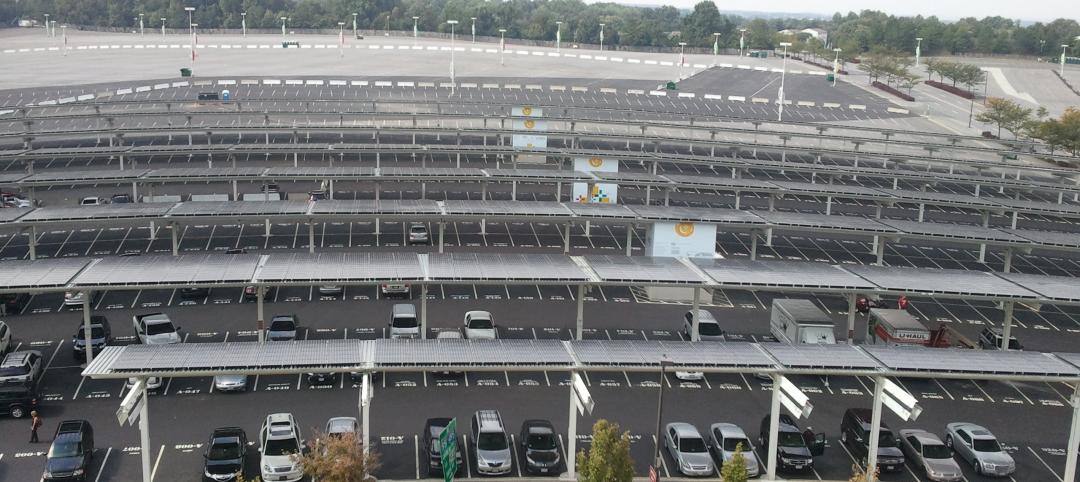For years the Oakland Athletics have been right at the top of the list of teams that desperately need a new ballpark. The Oakland Coliseum has caused the A’s a host of major league problems, chief among them recurring plumbing issues that have led to the clubhouses and dugouts flooding with sewage on numerous occasions.
Today, the team took another step closer to abandoning the problem child that is the Oakland Coliseum and announced it has hired four architecture firms to lead the design process of a new, problem-free home ballpark. Sasaki, Snøhetta, and Studio T-Square will lead the master planning and urban design efforts for the new stadium while HOK and Snøhetta will collaborate on the design.
Additionally, Sasaki, Snøhetta, and Studio T-Square will assist the A’s in a community engagement process. “A key component to making this project a success will be an active and meaningful engagement with A’s fans as well as with the broad and incredibly diverse community of Oakland,” says James Miner, AICP, Sasaki Principal, in a release. “We want the ballpark to be a great place not only for baseball, but also for the community and the environment.” There are no renderings yet, but Miner sees the new stadium as just one piece of the puzzle that will become an “urban ballpark district.”
Brad Schrock, AIA, regional leader of Sports + Recreation +Entertainment at HOK says, “We’re looking forward to collaborating with the A’s and our design partners to create an imaginative, amenity-rich, and enduring community asset.”
Currently, the stadium is being planned for a piece of land that sits next to Lake Merritt near Downtown Oakland. The area is surrounded by parkland and neighborhoods, a stark contrast to the sea of asphalt the Oakland Coliseum exists in. Estimates project the new stadium to seat 35,000 fans and cost approximately $500 million.
Update (12/06/17)
The A's just can't catch a break when it comes to getting a new ballpark. The board of trustees of Peralta Community College District, which owns the site near Laney College the new stadium was being designed for, voted to halt ongoing discussions with the A's.
"We are shocked by Peralta’s decision to not move forward," the A's said in a statement. "All we wanted to do was enter into a conversation about how to make this work for all of Oakland, Laney, & the Peralta Community College District. We are disappointed that we will not have that opportunity."
The next step for the team, if they are unable to rekindle discussions with the Peralta Community College District, is to reexamine other possibilities for a new stadium. The board's decision came as a surprise to the team, however, so a backup plan may not even exist.
Libby Schaaf, Oakland's mayor, remains optimistic about the A's future in the city and the team's ability to build a new ballpark. "Oakland remains fiercely determined to keep the Athletics in Oakland," Schaaf wrote in a statement on Twitter. "It is unfortunate the discussion with Peralta ended so abruptly, yet we're committed, more than ever, to working with the A’s and our community to find the right spot in Oakland for a privately-financed ballpark."
This latest setback comes less than one month after a design team of Sasaki, Snøhetta, Studio T-Square, and HOK were selected to design the new stadium.
Related Stories
| Sep 30, 2011
Design your own floor program
Program allows users to choose from a variety of flooring and line accent colors to create unique floor designs to complement any athletic facility.
| Sep 16, 2011
Largest solar installation completed at Redskins' football stadium
On game days, solar power can provide up to 20% of FedExField’s power.
| Sep 12, 2011
First phase of plan to revitalize Florida's Hialeah Park announced
This is the first project of a master plan developed to revive the historic racetrack.
| May 25, 2011
Olympic site spurs green building movement in UK
London's environmentally friendly 2012 Olympic venues are fuelling a green building movement in Britain.
| Apr 11, 2011
Wind turbines to generate power for new UNT football stadium
The University of North Texas has received a $2 million grant from the State Energy Conservation Office to install three wind turbines that will feed the electrical grid and provide power to UNT’s new football stadium.
| Apr 5, 2011
U.S. sports industry leads charge in meeting environmental challenges
The U.S. sports industry generates $414 billion annually. The amount of energy being consumed is not often thought of by fans when heading to the stadium or ballpark, but these stadiums, parks, and arenas use massive quantities of energy. Now sports leagues in North America are making a play to curb the waste and score environmental gains.
| Mar 25, 2011
Qatar World Cup may feature carbon-fiber ‘clouds’
Engineers at Qatar University’s Department of Mechanical and Industrial Engineering are busy developing what they believe could act as artificial “clouds,” man-made saucer-type structures suspended over a given soccer stadium, working to shield tens of thousands of spectators from suffocating summer temperatures that regularly top 115 degrees Fahrenheit.
| Mar 11, 2011
University of Oregon scores with new $227 million basketball arena
The University of Oregon’s Matthew Knight Arena opened January 13 with a men’s basketball game against USC where the Ducks beat the Trojans, 68-62. The $227 million arena, which replaces the school’s 84-year-old McArthur Court, has a seating bowl pitched at 36 degrees to replicate the close-to-the-action feel of the smaller arena it replaced, although this new one accommodates 12,364 fans.














